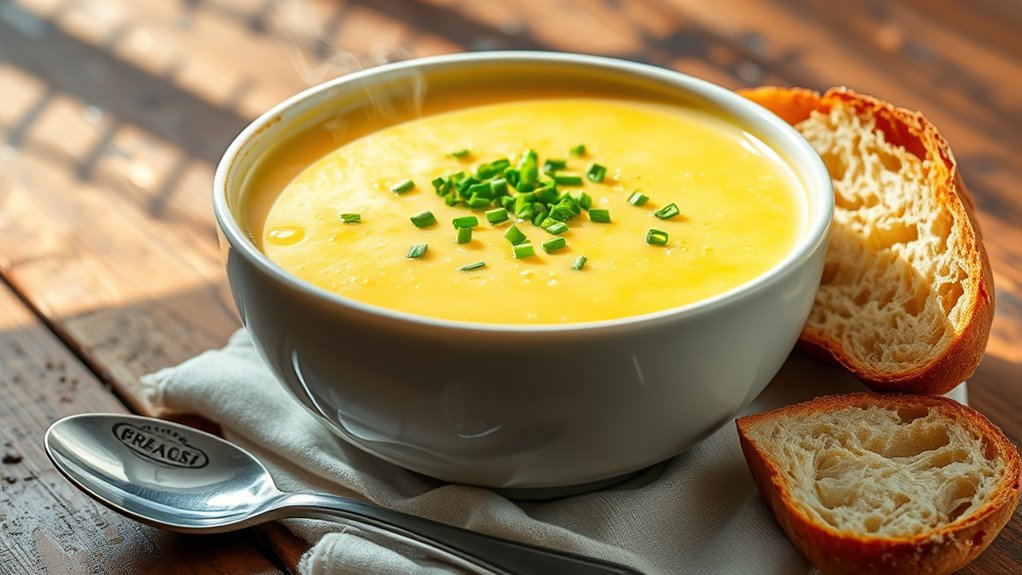This buttermilk potato soup is a cozy, one-pot meal you can whip up with simple staples. Start by sautéing onions in butter, then add diced potatoes, broth, and buttermilk. Let it simmer until the potatoes are tender, stirring occasionally to thicken the mix. Season with salt and pepper, plus any herbs you like. A smoother texture comes from blending, if you prefer. Ready to enjoy a creamy bowl—and you’ll find tips to tailor it as you go.
Ingredients and Quantity
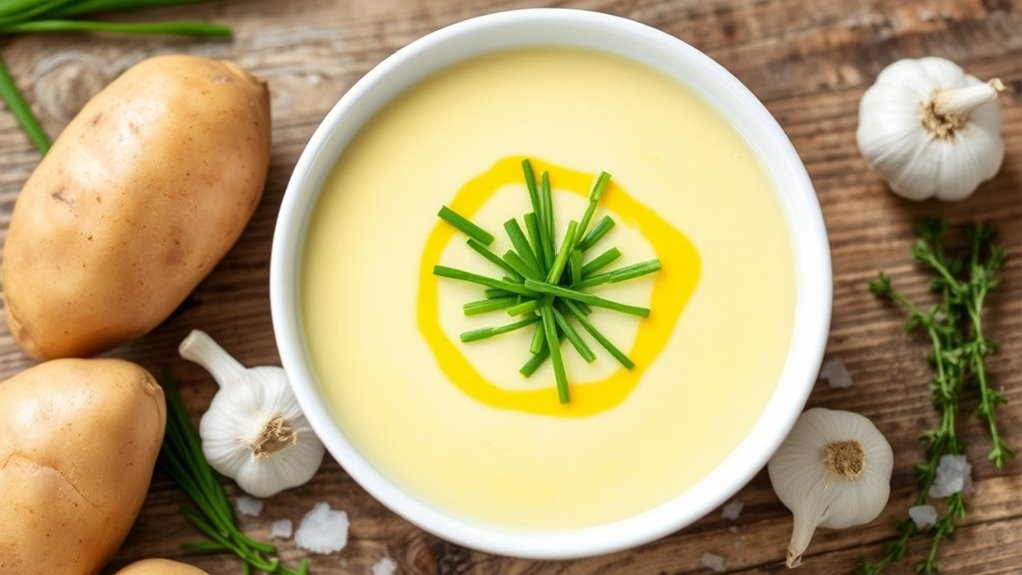
For this Buttermilk Potato Soup, you’ll need a simple set of ingredients: potatoes (peeled and diced), buttermilk, chicken or vegetable broth, onions, and butter. You’ll also consider pepper, salt, and optional herbs to tailor the flavor. This section highlights Buttermilk benefits and Potato varieties, guiding you to choices that suit your taste and freedom to improvise. Keep to fresh, accessible options that blend smoothly with creamy textures and balanced acidity.
| Ingredient | Quantity | Purpose |
|---|---|---|
| Potatoes | 4 cups diced | Base starch |
| Buttermilk | 2 cups | Creaminess, tang |
| Broth | 2 cups | Liquid body |
| Onions | 1 cup, diced | Aromatics |
| Butter | 2 tbsp | Richness |
Preparations
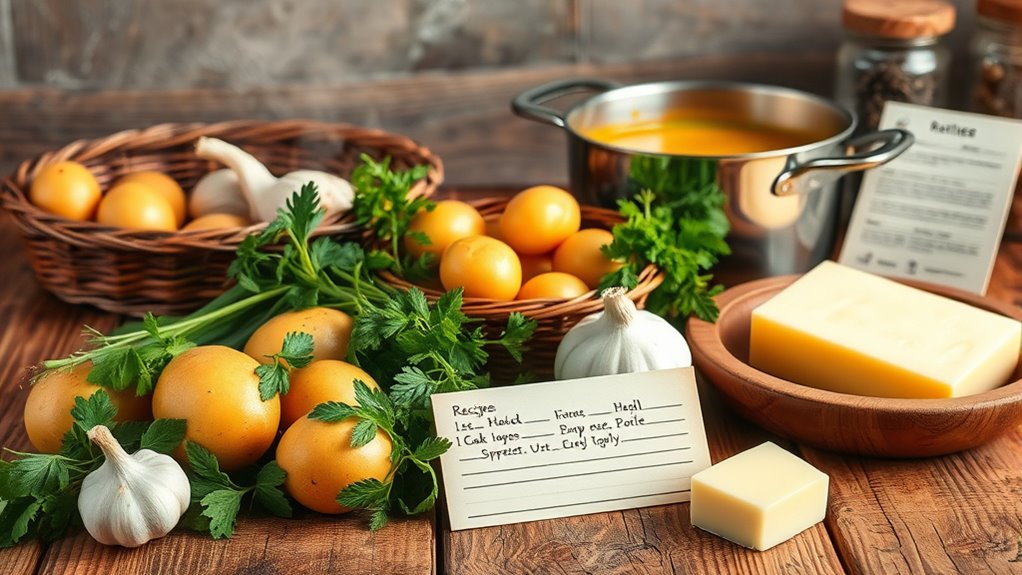
To get this Buttermilk Potato Soup simmering, start by prepping your ingredients: peel and dice the potatoes, mince the onions, and have the buttermilk and broth measured and ready. Preparation methods matter here: potatoes should be uniform in size for even cooking, and onions should be finely chopped to melt into the base. Ingredient selection guides flavor and texture, so choose fresh, sturdy potatoes and plain low-fat buttermilk to balance richness. Rinse potatoes to remove excess starch, pat dry, and set aside. Seasonings arrive later, but ready-to-use aromatics like salt and pepper should be within reach. Keep a clean station, label containers, and practice precise pacing so each step flows smoothly into simmering. This approach respects freedom and delivers predictable consistency in every serving.
Kitchen tools or Kitchenware Required
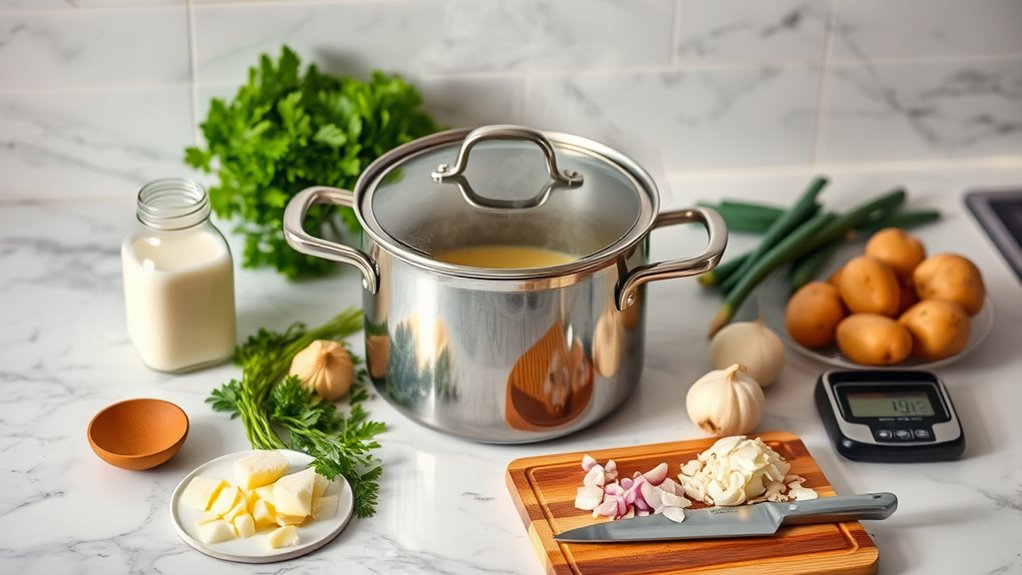
A sturdy pot or Dutch oven is essential for evenly simmering the potatoes and creating a smooth base, while a medium saucepan handles the optional garnish or quick reheats. You’ll rely on basic tools that keep the recipe efficient and approachable, focusing on kitchen essentials and smart cooking gadgets that save time without clutter. A reliable knife, cutting board, grater, and sturdy ladle round out the core kit, ensuring clean prep and easy serving. The right tools promote consistency and confidence in measuring, stirring, and tasting as you go. Here’s a quick glance at core items:
| Required | Optional | Bonus |
|---|---|---|
| Pot/Drover | Saucepan | Immersion blender |
How to Cook
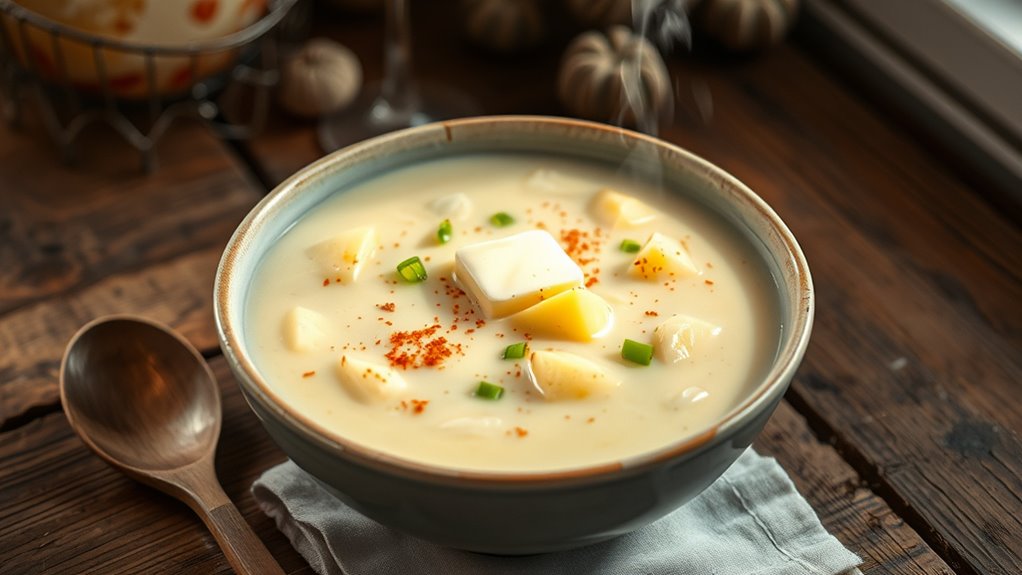
- Heat the pot over medium heat.
- Melt butter or warm oil in the pot.
- Add onions and garlic, cooking until soft and fragrant.
- Blend potatoes, broth, and buttermilk together.
- Simmer the mixture, watching it thicken.
- Keep heat steady to avoid curdling; stir occasionally.
- Test potato chunks with a fork for tenderness.
- Mash lightly if needed to add body.
- Simmer gently to preserve texture, avoiding vigorous boiling.
- Add salt, pepper, and a touch of thyme or paprika for subtle depth.
- Stir in chopped leeks or scallions at the end for brightness.
- Balance acidity with a splash of buttermilk and a pinch of sugar if potatoes taste flat.
- Finish with a final stir and serve warm.
How to Serve
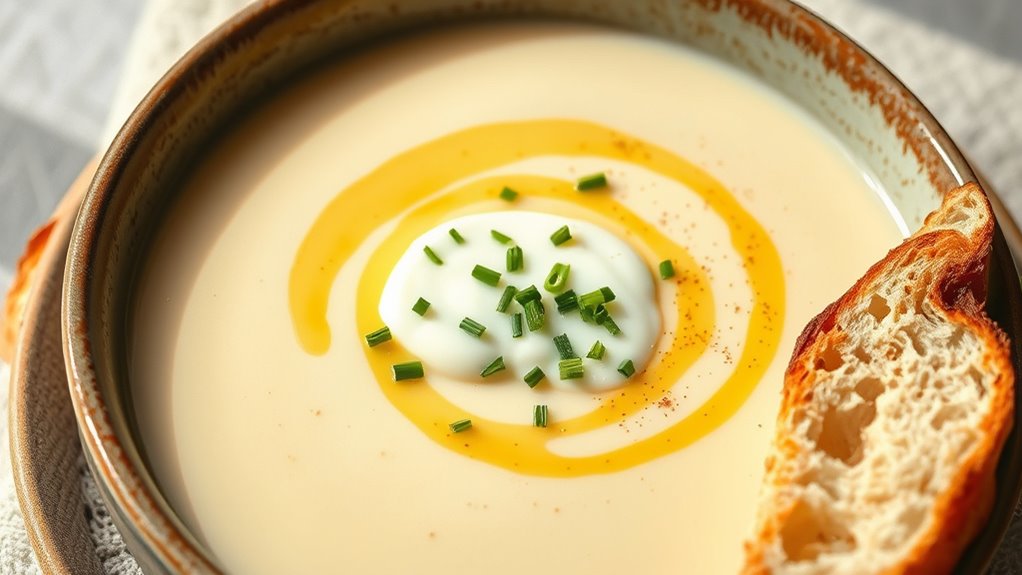
Creamy and comforting, this soup shines when plated in shallow bowls. You’ll start with a warm base and ladle it gently, allowing steam to carry aroma without glare. To serve, keep portions modest to highlight texture and color. Pair with crusty bread or a simple green salad to balance richness. Serving suggestions focus on contrast: a dollop of sour cream or yogurt, thin chives, and a light dusting of cracked pepper. Garnish ideas include crispy potato bits for texture, a drizzle of olive oil, or a pinch of paprika for subtle warmth. Plate with care, ensuring each bowl shows even potato chunks. Maintain warm bowls and serve promptly to preserve creaminess and flavor integrity. Enjoy the comforting, straightforward presentation.
Tips
To get the most flavor and texture, start with high-quality potatoes and fresh cream, then adjust thickness gradually as you simmer. You’ll gain control over body, balance, and finish with simple tweaks. Below are practical tips you can trust.
- Focus on even chopping for uniform cooking and smoother texture
- Taste and season in stages to avoid over-salting
- Use a splash of starch from potatoes to help body naturally
- Explore soup variations and flavor enhancements with subtle garnishes
Keep notes as you go so future batches reproduce success. Avoid overthinking: aim for bright potato sweetness, creamy mouthfeel, and a clean finish. If you crave extra lift, a hint of chives or peppery oil often delivers it without overpowering the base.
Food Value and Benefit
Buttermilk potato soup offers a nutritious and flavorful dish with several health benefits. This recipe combines the energy-providing carbohydrates from potatoes with protein, calcium, and vitamins from buttermilk and herbs, making it a wholesome choice.
Buttermilk potato soup combines energy-rich potatoes with protein, calcium, and vitamins for a wholesome, flavorful meal.
Benefits of eating Buttermilk Potato Soup:
- Provides a good source of carbohydrates for sustained energy.
- Contains protein and calcium from buttermilk, supporting bone health and muscle function.
- Supplies dietary fiber, especially from potato skins, promoting digestive health.
- Contains vitamins such as Vitamin C (from potatoes) and Vitamin B6, which aid immune function and metabolism.
- Includes minerals like potassium (important for heart and muscle health) and phosphorus.
- Moderate fat content helps absorption of fat-soluble vitamins.
- Can be adapted to lower fat and sodium content for heart health by using low-fat or dairy-free buttermilk alternatives and reducing added salt.
Frequently Asked Questions
Can I Substitute Dairy-Free Milk in This Soup?
Yes, you can substitute dairy-free milk. Try unsweetened almond or oat milk for milder flavor, or coconut milk for creaminess. Dairy alternatives may affect texture; adjust simmer time. Expect flavor variations, richness, and different mouthfeel.
What Is the Total Simmer Time for the Soup?
The total simmer time is about 15 to 20 minutes. For best flavor, use simmering tips as you go, and seek flavor enhancement with gentle heat and occasional stirring to avoid scorching and preserve creamy texture.
Can I Freeze Leftovers Without Curdling?
Freezing leftovers is possible, and you can minimize curdling with proper handling. Freeze cooled soup in airtight containers, or within 2 inches of the top. Thaw slowly, then reheat gently. Freezing tips to prevent curdling.
How Can I Thicken the Soup Without Flour?
You can thicken it without flour by simmering longer, mashing some potatoes, or using potato alternatives and thickening agents like cream, cheese, or cornstarch slurry. Adjust heat gently, stir constantly, and taste for balanced texture and flavor.
Is This Soup Suitable for Gluten-Free Diets?
Gluten-free ingredients make it possible, but you must check labels for gluten and cross-contamination. If you’re avoiding gluten, confirm dairy and potato base are gluten-free, respecting dietary restrictions while enjoying a safe, flavorful meal.
